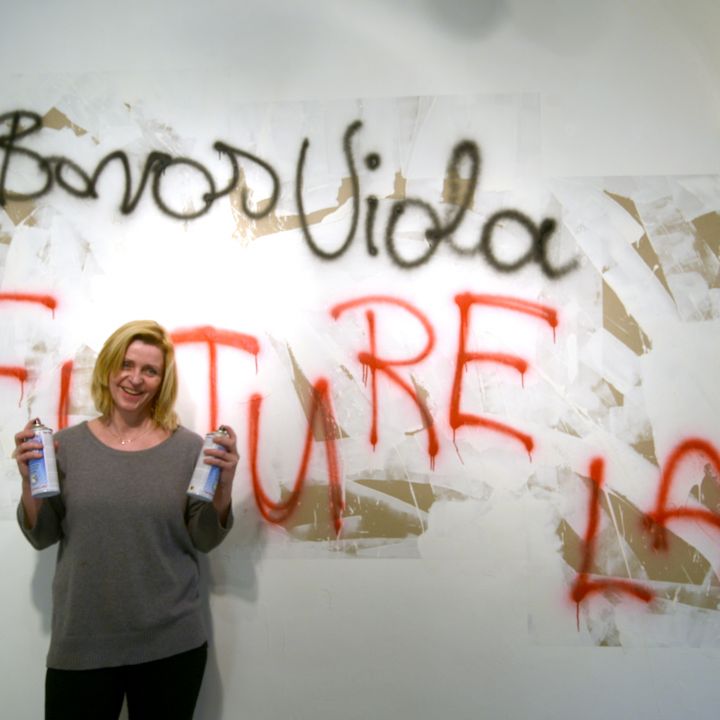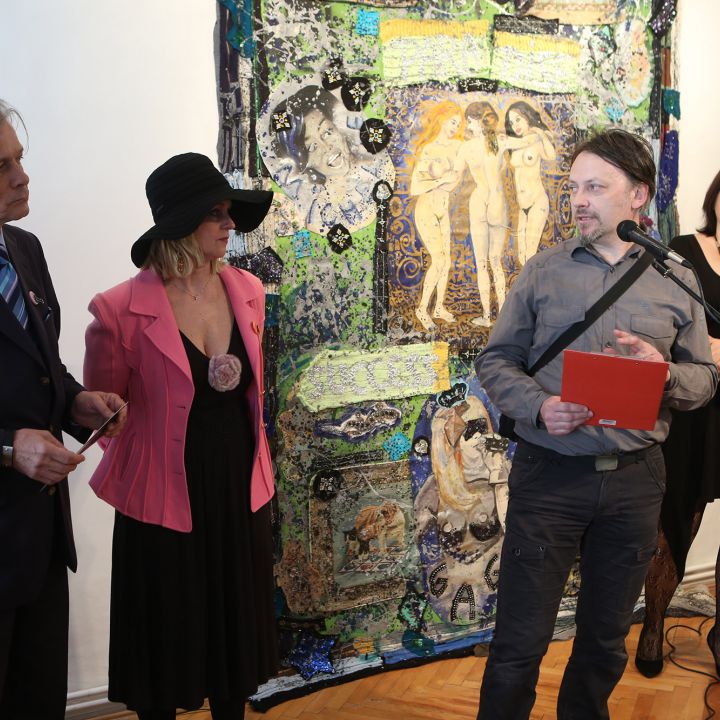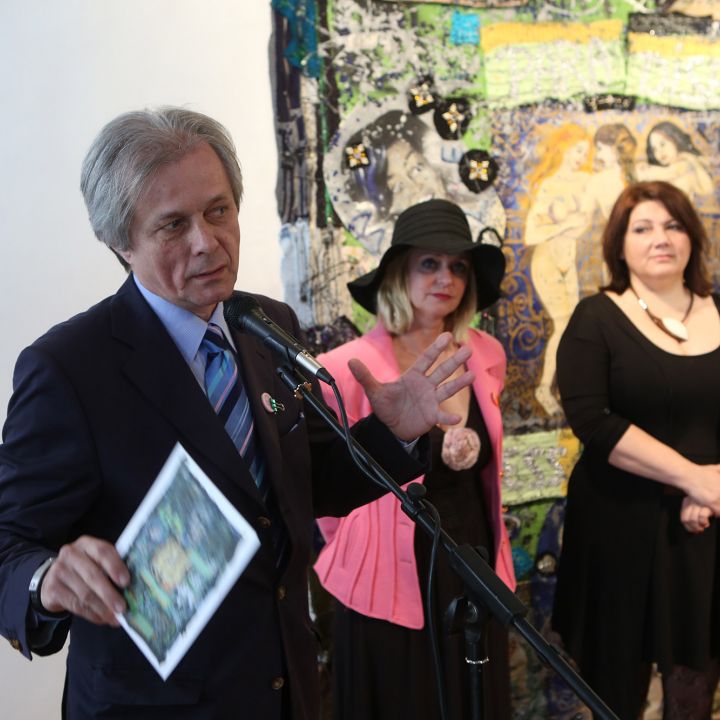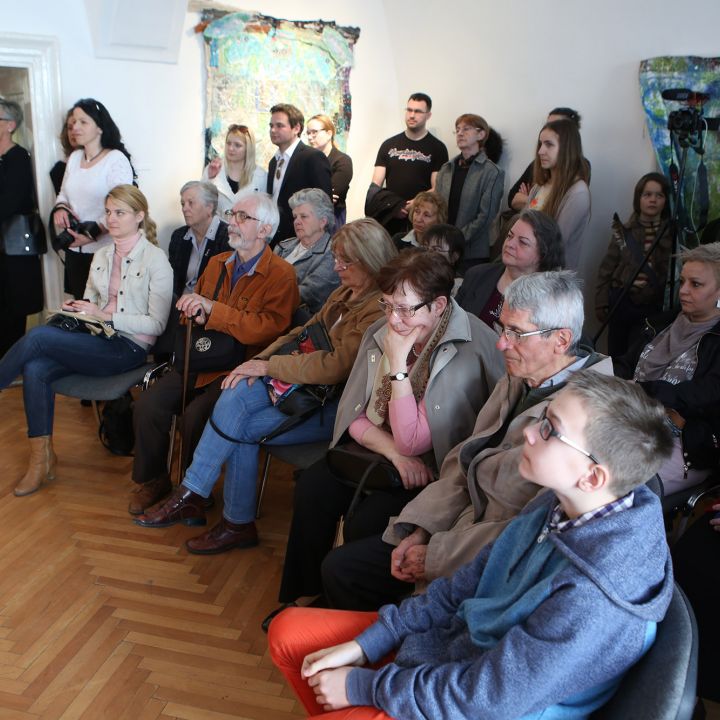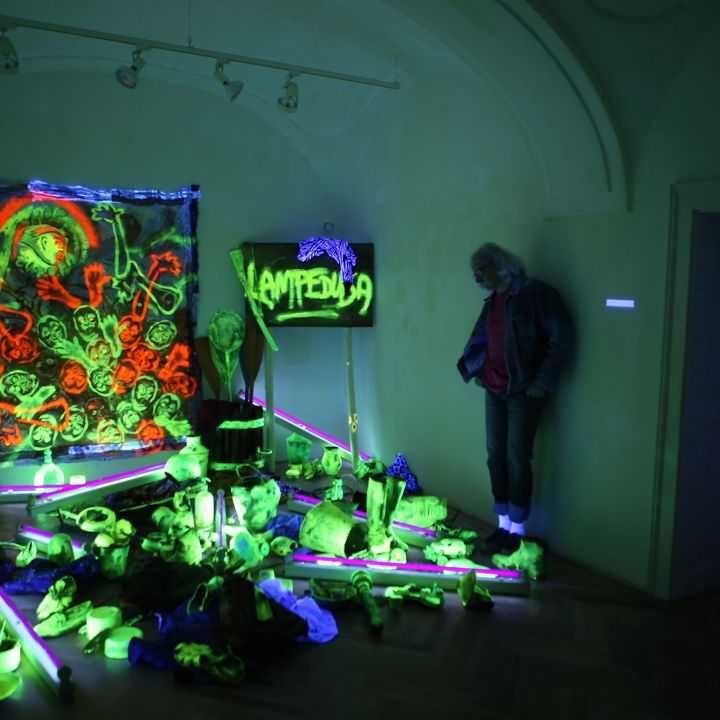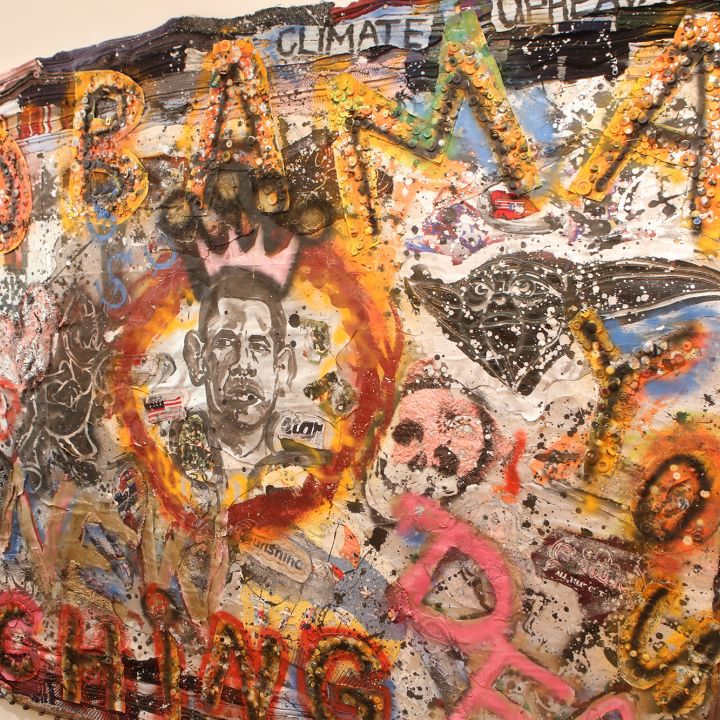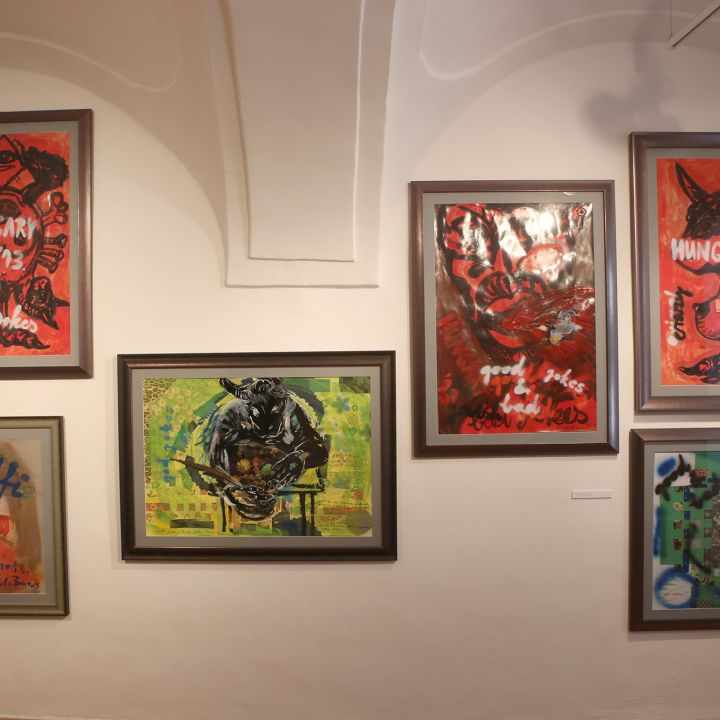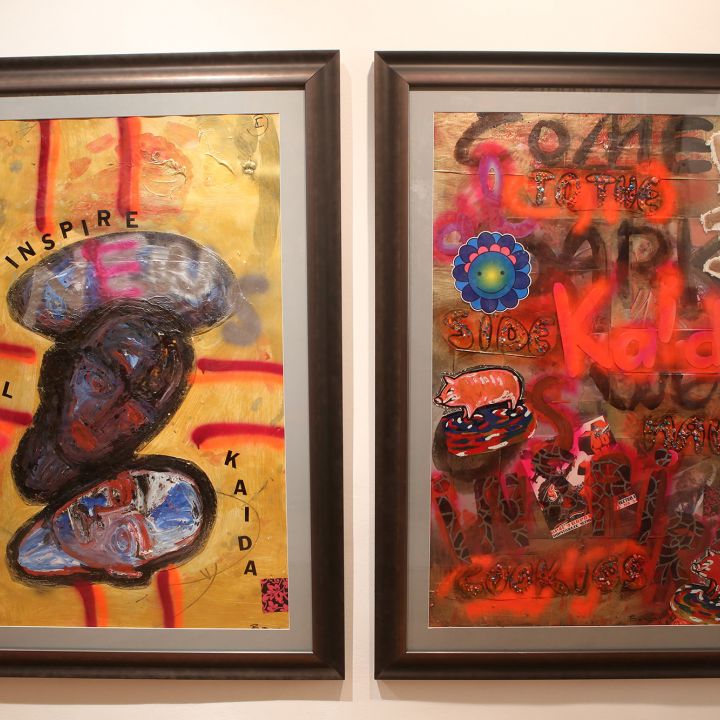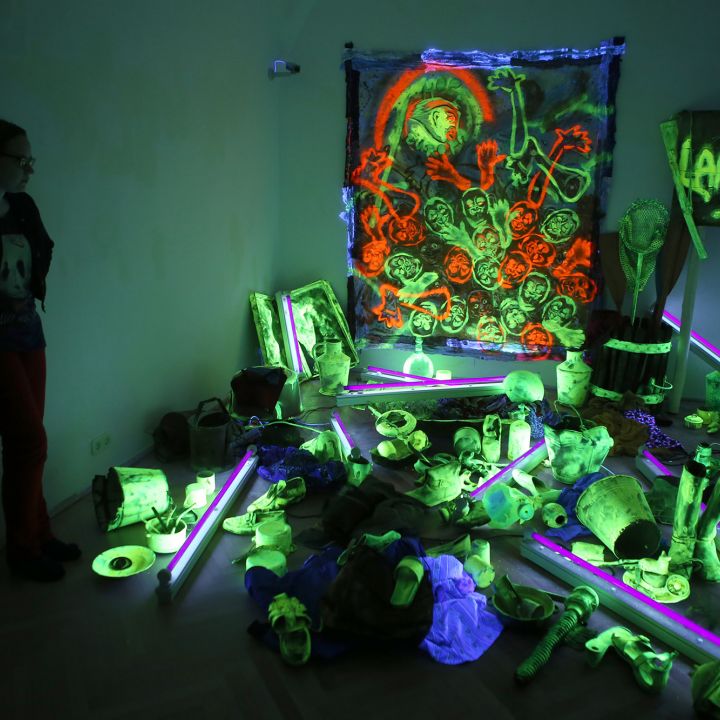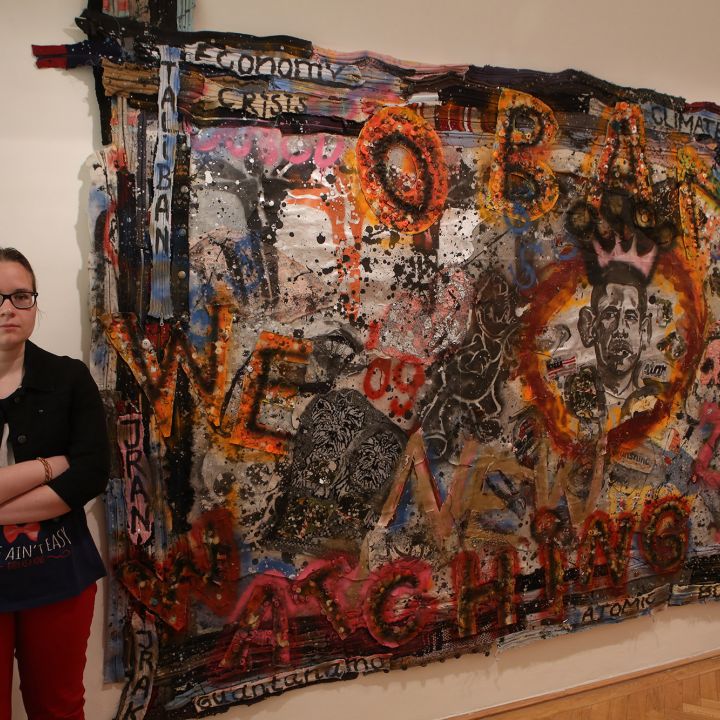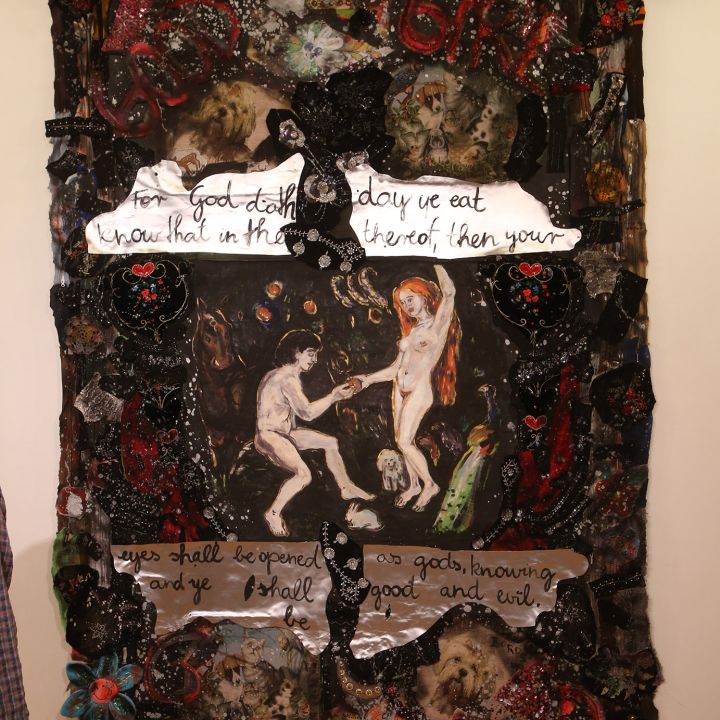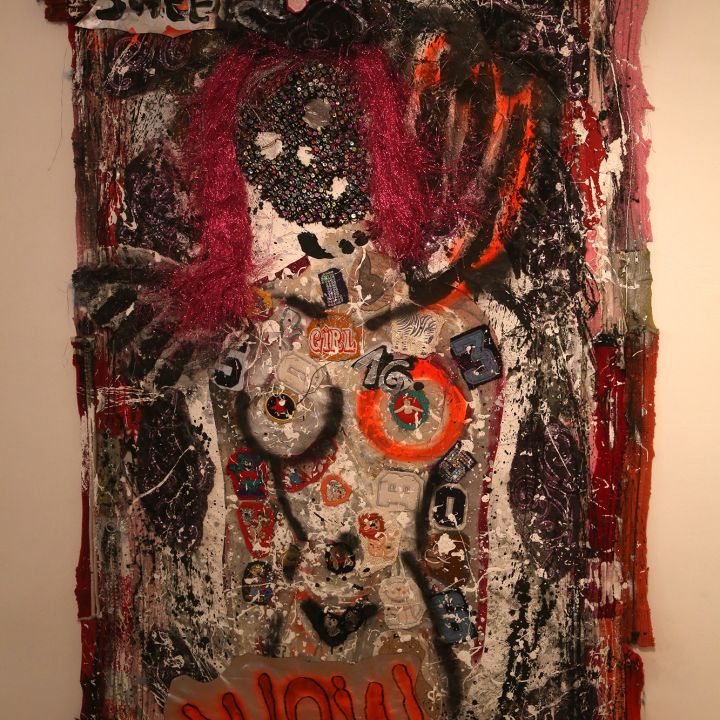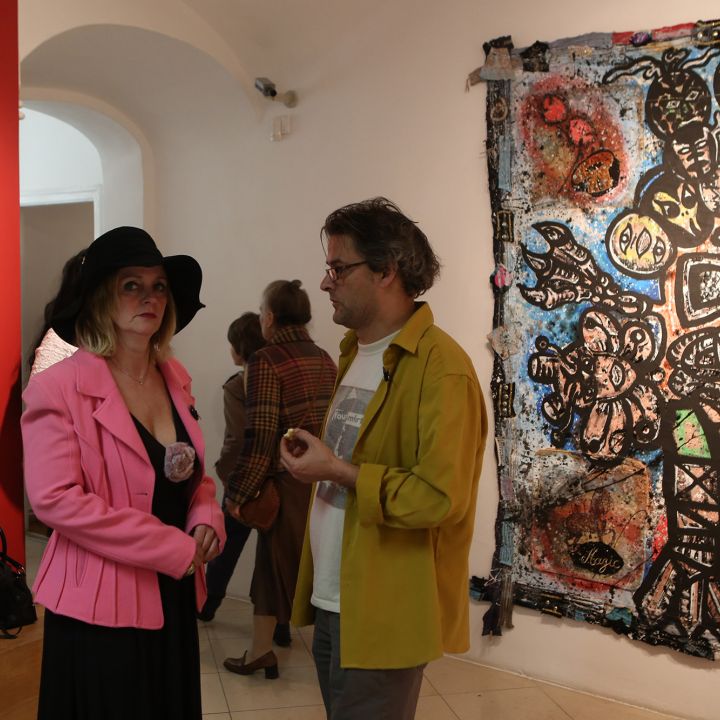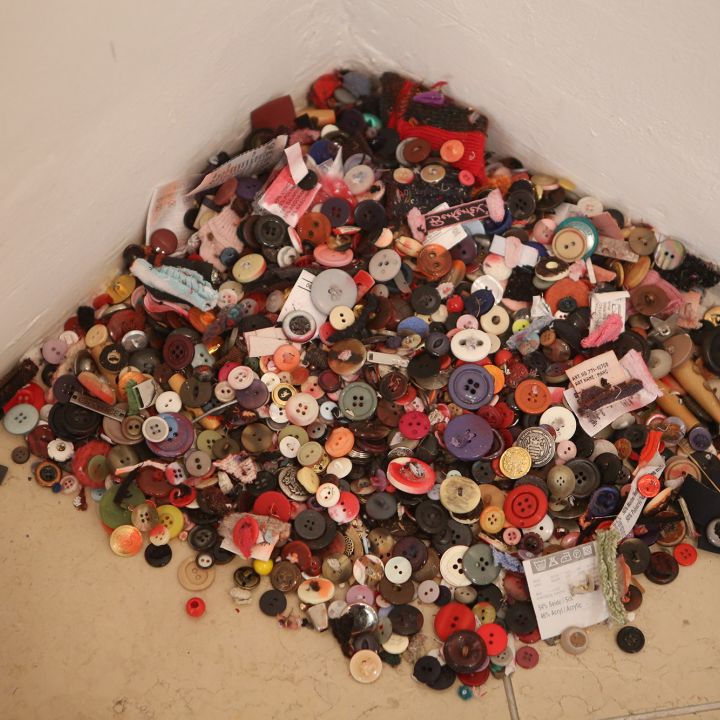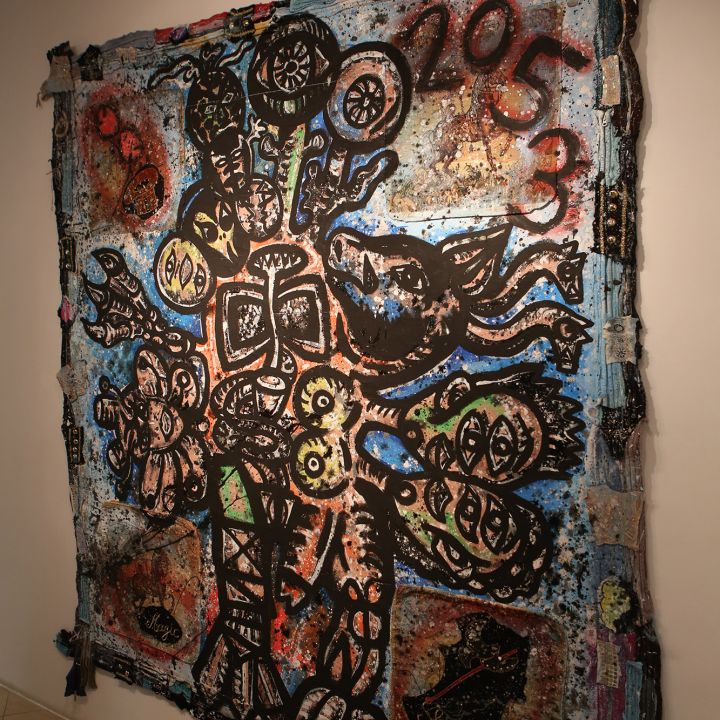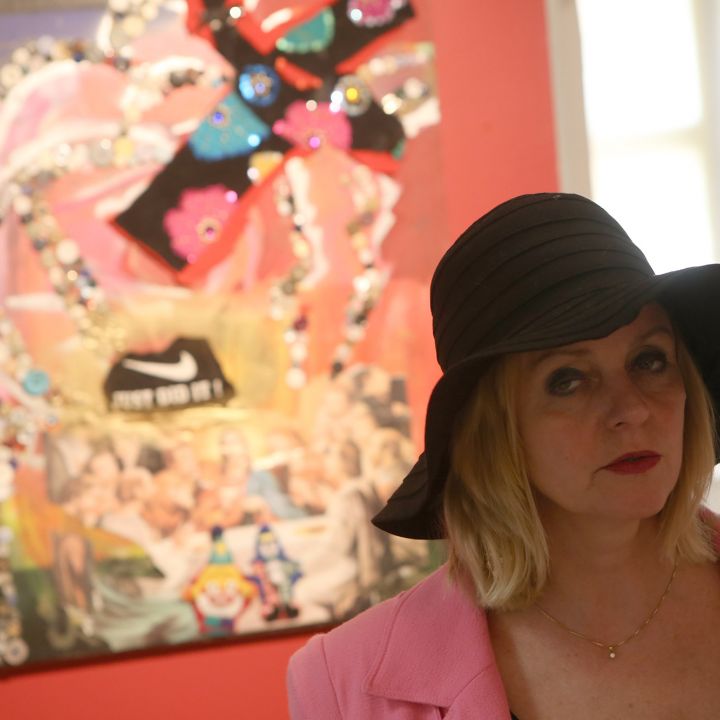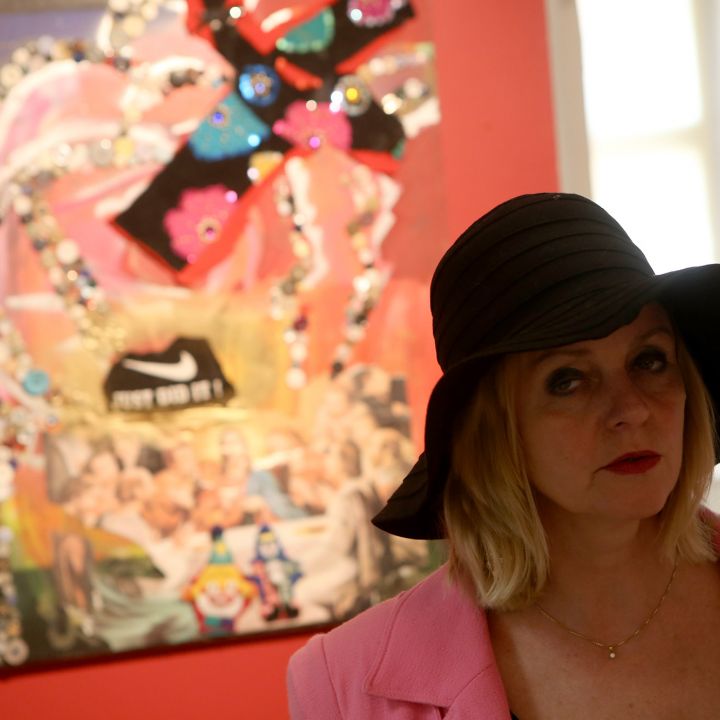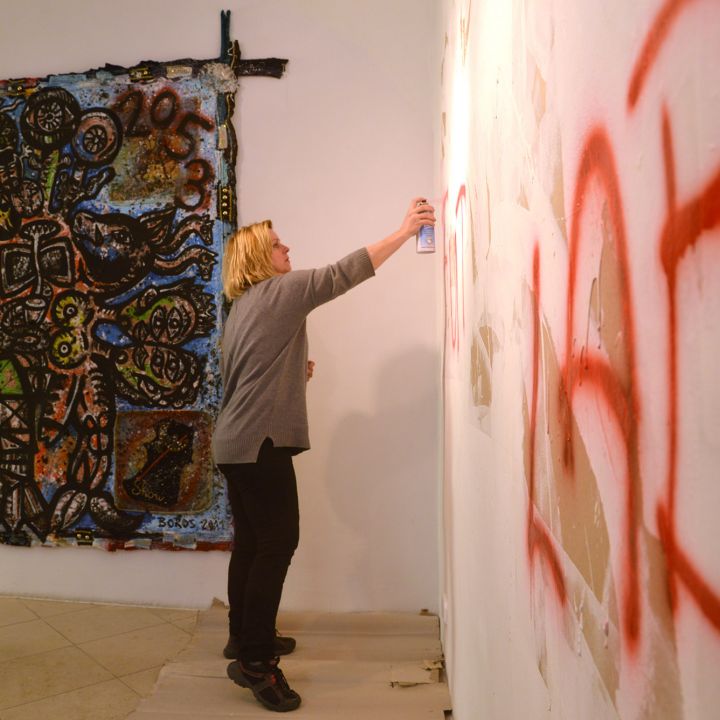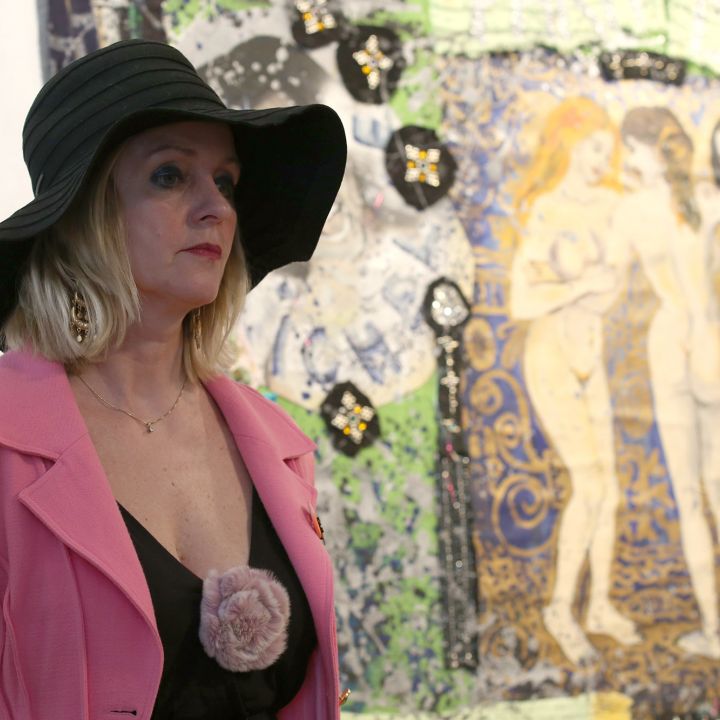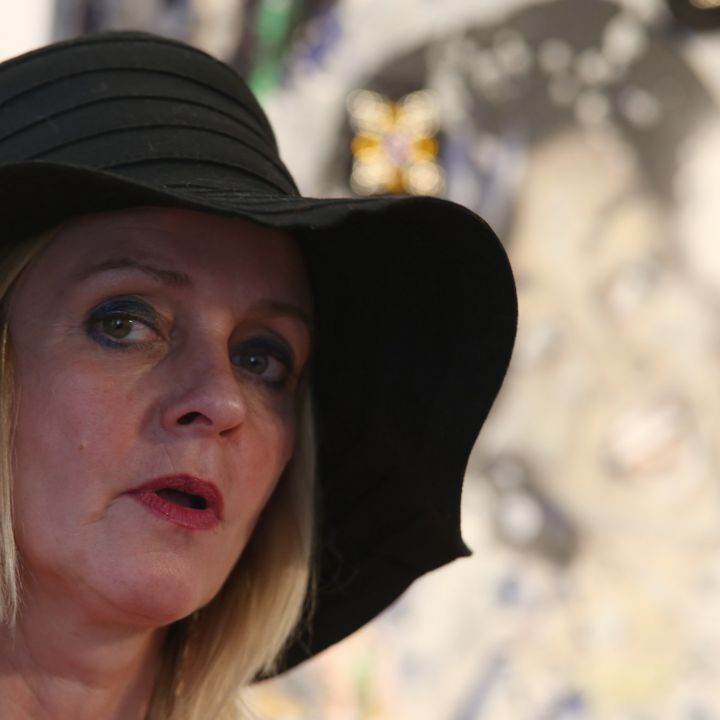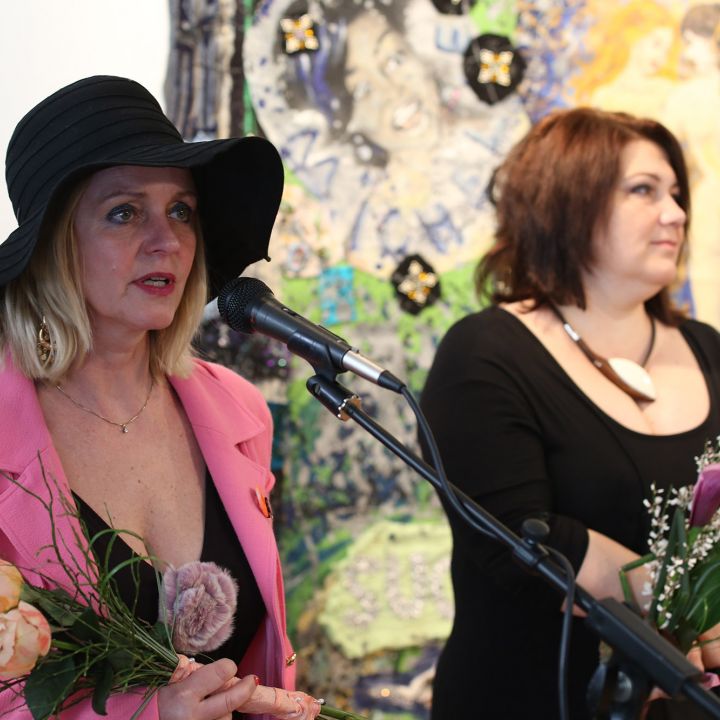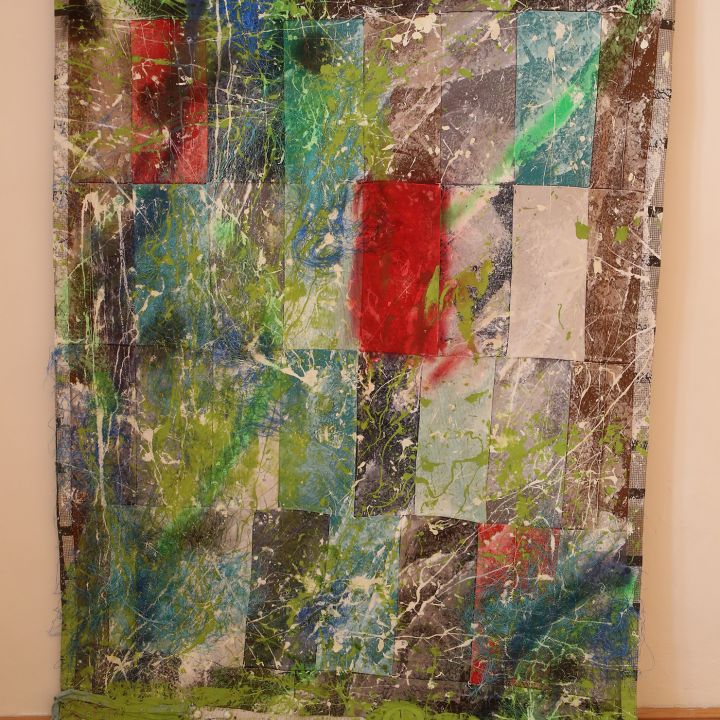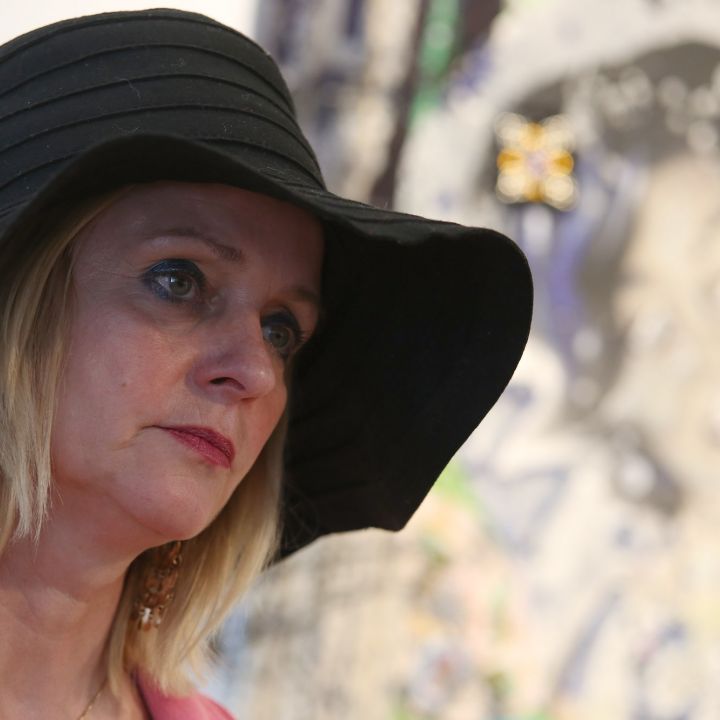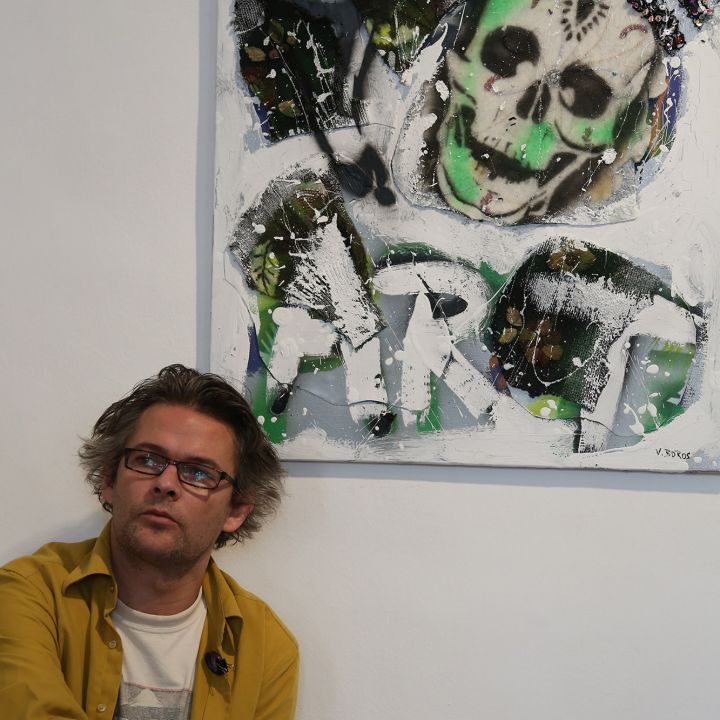In practice Viola Boros's current paintings also appear more as objects dominated by their place in space. Recently her work has again been characterised by a particular collage-like structure, which is even more dominated by the use of materials: pieces of fabric, painted canvas, buttons, zippers. This use of materials is in fact a reflection of the traditional notion of women's work, which at the same time contradicts the old convention of small female works as her 'pictures' are mostly huge.
Many of her works are very colourful, which makes them almost oriental. Almost all of the works have some kind of text, mostly in German or English, which form an important part of the work. Her works have a conceptual attitude, a conscious use of materials and images, which she then completes with a strong gestural (re)painting, dominant in the period of abstract expressionism. In terms of her subjects, she often uses well-known pictorial types, such as the Last Supper. She also reflects on art itself, for example in her painting Hype!, which evokes not only the name of Damiens Hirst but also his famous skull with diamonds and in addition to art the art market is also known for its reputation.
She is socially and politically sensitive and the issues of war and minorities are ever-present. In one of her works, All the Damned Minorities she reflects explicitly on minority issues pointing out that being a minority is relative, because a racial or religious group is in the majority in one country and in the minority in another, but the majority is usually intolerant of the minority, so that Christians, Jews, Palestinians, Tamils, Roma, Turkmen, etc., are on her tapestry. And on others Lenin, the Russian flag, Brezhnev-Honecker and a host of ready-made relics of socialism are stitched into the picture. On the positive side we find Obama surrounded by a list of critical American problems (Iraq, Iran, New Deal, nuclear bomb, Guantanamo, etc.).
Recently, a new motif has been appearing regularly in her work and her minotaur works are practically a series in their own right. In Viola Boros' paintings the mythological bull-headed Minotaur with a human body becomes a symbol of the wildness, passion and the man who rejects civilisation, i.e. the man-animal does not represent the inhumanity of man, but rather the uncontrolled subconscious, the strong man who dares to take on visceral experiences.
In addition to the Minotaurs she has another series of textile paintings, a series of works with a definite centre. In the centre of these pictures a huge black circular motif carries the essence of the work with a figure and a text around it, which like eternal wisdom or even clichés (To want to win and to know how to lose; The man who carried away the mountain is the same as the man who started moving little stones) give us a guide to life. In general, too, but these works almost explicitly take on the function of folk embroidered wall hangings only with contemporary materials, themes and texts. Viola Boros's works share many similarities with the more classical women's works, yet reinterpret and modernise them."
Andrea Bordács aesthete, art critic
"If you look at the material on display you can see that the exhibition space contains works with different themes, belonging to different cycles, made around 2010-12. It can also be seen or at least assumed,that this is only a fraction of the works from a particular problem or a particular period of life. Viola Boros is an experienced exhibitor and workaholic. Inspired by the issues that preoccupy her she almost literally tears out, one might say cures the artworks that relate to them. Let's set off from the present to the future and then back again to arrive before we have even begun our tour! Who is not interested in the future, in the personal destiny of man and with it the future of humanity? But is it possible to research the future in a laboratory? In any case the future is the problem ahead, the construction of the narrative time of man(s). In some of Viola's works it is not necessarily the problem that is revealed, but the possibility of liberation, the degree of freedom created by a possible future and the anxiety that goes with it. Perhaps the main difference with the world of science-fiction utopias, with Verne's technological self-redemption is that the possibilities of our time are essentially those of the immutability of man, the master of machines. But very roughly: with the help of bionics, genetics and nanotechnology man can become what or who he is no longer what he was, that is to say: who we are. But "what are we", you might ask? Simple machines, biodiesels of creation, brains in a tank? Tantalizing, one might say embarrassing questions directed at the viewer by the strange technical works on display here. At the very least it is disconcerting that in the lifetime of a single generation there are far more technological, communicative and therefore cultural changes than we can comprehend or process. We must hold on to catch up!!!
How is it possible that while the technosphere is moving at a rapid pace, the human sphere cannot keep up? Or can it? After all, the world's stock exchanges have long since been run by robots and written programs... The future as a technological dystopia is already here, it has already begun. And in the midst of it, Viola Boros looks to universal horizons as part of the global village. She places her hand on the artery of her age and feels its throbbing. And indeed we are not always cheered by the spectacle she presents. According to German media researcher Norbert Bolz. humanity generates its own global challenges in order to find solutions. Terrorism, media dominance, the shifting political world order, technological acceleration are nonetheless real threats, some of which we may already have found solutions to. One of these (according to Bolz) is consumerism, the creation of newer and newer identities.
In global culture we are under the gaze of totalitarian gaze. Your watching MTV - we heard it when music channels moved into our homes. Your watching Obama - writes Viola Boros on her kombine's picture. Objects are more capable of representing people, they have an existential substitute value."
József Készman, art historian - spoken at the opening of the exhibition on 11 April 2015.

